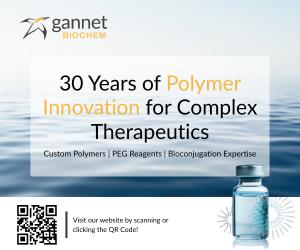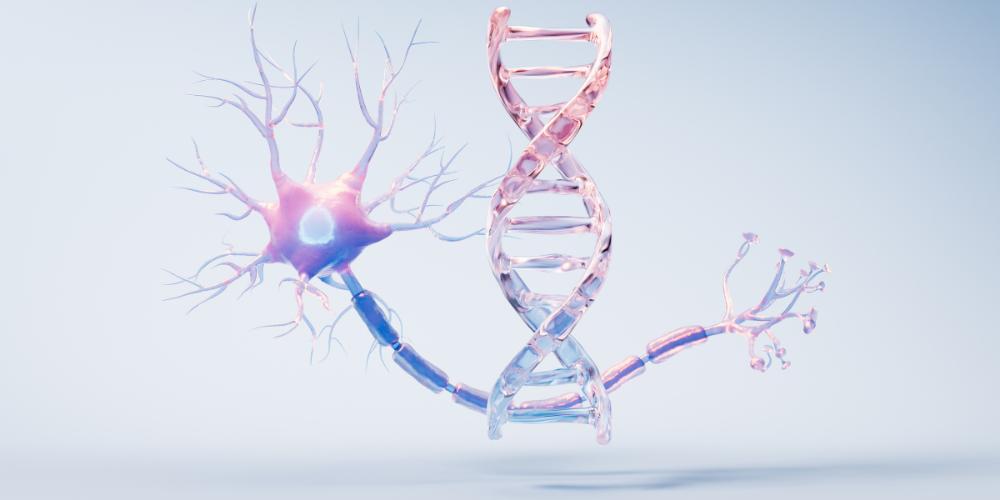How Chiesi Evaluates Cell & Gene Delivery Technologies
Chiesi USA’s Dr Ester Caffarel-Salvador, Associate Director, Strategic Innovation, Rare Diseases, discusses overcoming barriers in cell and gene delivery, different delivery modalities, and what she looks for in potential development partners.

Can you talk about some of the work that you’re currently leading at Chiesi Global Rare Diseases (GRD)?
I’m part of the Strategic Innovation Unit at Chiesi GRD, where our mission always has the patient at the forefront of our minds. We develop innovative treatments for global rare diseases by analyzing emerging biotech technologies and strategically anticipate and shape the evolution of biotech. To expand these efforts, last year, the Strategic Innovation Unit was put together to scout and evaluate innovative therapeutic modalities from academic and research institutes as well as start-up and early-stage biotech organizations.
Chiesi GRD has core products that are divided in three strategic areas: inborn errors of metabolism, hemato-immunology, and ophthalmology. These products consist of oral small molecules and injectable enzyme replacement therapies. My unit’s goal is to look past the conventional treatments and explore novel therapeutic modalities such as cell and gene therapy, siRNA, oligonucleotides, etc, as well as delivery vectors to see where they may fit within the current Chiesi GRD pipeline. We are keeping an open mind and creating relationships with academic groups and other research groups, accelerators, incubators, venture capitalists and biotech companies to learn about these cutting-edge technologies and support them as part of Chiesi’s strategy.
What are some key elements you are looking for in these innovative modalities when it comes to potential partnerships?
The most important thing is to find a treatment that will benefit patients with rare and ultra-rare diseases. For context, there are over 7,000 rare diseases and more than 300 million people suffering from them worldwide. Many innovative therapeutic modalities that have arisen in the past few years can be used as a platform, which may be used to treat different diseases. In the market, we often find small molecules and biologics to manage specific indications, but you need to start from scratch the development process to find a treatment for a different disease. With gene therapies, you can deliver a gene within a delivery vector and just by changing the gene sequence you could tackle a totally different indication. That’s the beauty of these novel therapies.
There are many companies working in this space, so we are looking for preliminary data: some kind of proof- of-concept, ideally in vivo in animal models, because sometimes things work at the bench but lose their effect when translated into animal or human models. We want to validate these technologies and pair modalities with delivery means to ensure that they target the correct organs to treat rare diseases.
"With gene therapies, you can deliver a gene within a delivery vector and just by changing the gene sequence you could tackle a totally different indication. That’s the beauty of these novel therapies."
What other delivery methods are there for these therapies besides lipid nanoparticles (LNPs)?
There are many non-viral vectors used for drug delivery in addition to LNPs, such as dendrimers, micelles, carbon nanotubes, and liposomes, to name just a few. While we talk a lot about LNPs, nanoparticles don’t need to be lipidic; they can also be made of polymers, gold, or silica, for example. In the body, we have naturally engineered nanoscale membrane vesicles secreted by most cells, known as exosomes. Many scientists are leveraging exosomes or creating their own vesicles with similar properties to sneak through the immune system given their ability to escape phagocytosis and also cross stringent biological barriers like the placenta or the blood- brain barrier. Some of the gene therapies are also being delivered in the naked form. There are many tweaks we could make by adding polymers, other particles, or chemical-based modifications to make these therapies more stable, depending on the organ they need to reach. Circularizing RNA is another approach to circumvent the problem of delivering a genetic load without it being degraded in the body.
There are also several viral vectors approved by the US Food and Drug Administration to deliver gene therapies, including lentiviral vectors, herpes simplex virus, adeno-associated vectors (AAVs), and many others in clinical trials. These are the most common and many research groups are working on capsid modifications to reduce immunogenicity and target specific organs more efficiently. Some of these vectors have more affinity for one organ over another, which also plays a role into the delivery strategy.
What differentiates a company from the pack of LNP delivery developers?
Having done a mini-MBA at Harvard and spending time consulting for industry and venture capital groups, I learned what to prioritize and value the most in a company. Their scientific data is certainly the most important parameter, but we also look at the experience of the team, both their previous successes and how well they work together. It’s not just what’s on the website or what they say they can or have achieved. It is important to believe in the team and their common motivation and confirm that they have the right strategic milestones, value proposition, and funding targets. They also need a solid understanding of the underlying science to make sure what they are presenting is feasible and develop a roadmap to de-risk and validate these new technologies.
That’s why many pharmaceutical companies need preliminary data in animals and stability or toxicology studies to reassure them that the therapy is safe and decrease the risk that they will lead to complications when translated to humans.
Are there physical delivery methods in the pipeline that you are particularly excited about?
Microneedles, a field that I have been working on for over a decade, are a great example. There are lots of drug delivery devices that leverage microneedle technology or other physical disruptors like ultrasounds, electroporation, sonophoresis, and needle-free injections. Years ago, these were tested primarily in the skin because it’s a very large and accessible organ. Nowadays, these technologies are being embedded into oral devices and acting in one of the organs along the GI tract to treat numerous diseases such as diabetes, IBD, and Crohn’s disease.
A lot of the physically disruptive methods I mentioned are being optimized to be more portable and enable at-home therapy, either transdermally or embedded in oral devices so patients don’t need to go to the hospital. In the future, we might be able to get one of these devices from the pharmacy or delivered directly to our homes.
"Pharmaceutical companies need preliminary data in animals and stability or toxicology studies to reassure them that the therapy is safe and decrease the risk that they will lead to complications when translated to humans."
Are there any specific complexities when it comes to physical delivery methods for cell or gene therapies?
One of the main problems associated with drug delivery is that the macrophages and enzymes in the body, like those found in the bloodstream or digestive tract, degrade these therapeutic modalities, even when delivered embedded in physical delivery methods like microneedles. Often you cannot take these novel therapies orally or via a simple injection since they can be degraded prior to causing the desire effect in the body, so there needs to be an extra layer of protection. Many of these modalities are encapsulated inside viral and non-viral vectors like nanoparticles. For example, the mRNA of the COVID-19 vaccine from Moderna was administered inside lipid nanoparticles to protect the mRNA from metabolic enzymes and the biological environment that reduce the risk of attack from macrophages.
This is one of the biggest challenges because oftentimes the carrier is what causes immunogenicity. Specifically, if you need to re-dose a treatment using viral vectors, there are cells in the body that have immunological memory from having been exposed to that carrier in the past and start to attack or generate an immune response which could lead to severe complications. There have been a lot of advances in both viral vectors and non-viral vectors as well as adding modifications to the naked nucleic acids to avoid being targeted by the immune system.
While we have a lot of emerging technologies in this area, there are still many uncertainties when it comes to regulatory acceptance because we need to make sure that these therapies are both safe and effective for patients. It’s even more challenging when you consider that patients often prefer a once-in-six-months or once-in-a-lifetime therapy over daily injections or pills.
How did you get into drug delivery?
My path into drug delivery was a bit of a coincidence. I was awarded a fellowship to go to Northern Ireland to get some work experience and I was placed at the laboratory of Professor Ryan Donnelly at Queen’s University Belfast where I started working on microneedles. Prior to Belfast, I had never heard of the word “microneedle”. Back then, microneedles were just a niche field of research, but it has now bloomed with many research groups working on microneedles around the globe.
Professor Donnelly’s lab was focused on developing an alternative to injections by embedding different drugs inside dissolving microneedles and delivering them across the skin barrier. In my PhD, I used hydrogel-forming microneedles for therapeutic drug monitoring, but later began exploring them for drug delivery. Hydrogel-forming microneedles are sharp when dry (like contact lenses when they dry out) in order to poke small holes in the skin, but then they swell with interstitial fluid (the liquid between cells), becoming a flexible hydrogel that allows the drugs placed in a back reservoir to diffuse into the body. That was my first introduction to the drug delivery space.
Is there work in using microneedles for cell & gene delivery?
Absolutely. There are a number of labs that have diverted their efforts to incorporate molecules like siRNA, antisense nucleotides, DNA and CRISPR mechanisms into microneedles. The sky’s the limit on the molecules you can deliver using microneedles. However, achieving a relevant dosing regimen will be key, and this may be limited by the drug payload depending on the type of microneedle system used for it. For example, the payload in polymeric microneedles is often limited by the amount of drug embedded in the microneedle matrix based on its dissolution properties; however, hollow microneedles allow for bigger reservoirs which contain the drug of interest in a solution.
Can you speak about your role as an advisory board member for drug delivery companies?
I am on the scientific advisory board of two drug delivery companies, Biograil and Medicsen, and I’m an advisor for the Japanese startup acceleration program where I mentor various Japanese bio/healthcare startup companies in cell and gene therapy. I love being close to Kendall Square and all of the innovation happening in the area. Being active in different ecosystems like Europe and Japan has also exposed me to more fascinating projects. There is really great science going on around the world and advising these companies gives me the opportunity to continuously learn, find synergies, and create international collaborations to progress drug delivery science.
"Leverage your network. There are many companies, especially in the US, who gain funding through the connections made and outreach."
What is your advice on how to succeed in this innovative delivery space?
It’s important to have a strong scientific approach and enough data to support its validation and safety specifically.
Leverage your network. There are many companies, especially in the US, who gain funding through the connections made and outreach. It’s very difficult to cold-call an investor, explain your technology, and ask for millions of dollars. Networking, being active in conferences, and knowing the key stakeholders in your field is very important.
Surround yourself with a good scientific advisory board that believes in your technology and who can help you make the right connections.








